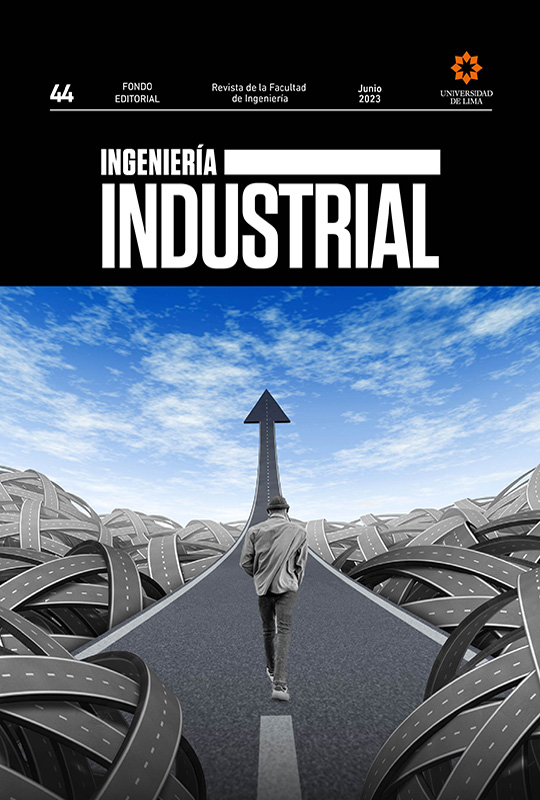Changes in Financial Habits Caused by Fintech in Peru
DOI:
https://doi.org/10.26439/ing.ind2023.n44.6180Keywords:
Fintech, financial education, digital transformation, PeruAbstract
The goal of this study is to identify changes in the financial habits of the Peruvian population as a result of the growth and use of financial technologies. The study was conducted in a context where habits can be influenced by these technologies, consequently leading users to employ digital methods that can offer benefits such as time saving, satisfaction and security. Mobile payment and currency exchange financial verticals were defined for the scope of this project. A survey was conducted on a sample of 384 users obtained from the database of a prominent bank in the country. It aims to obtain the users’ perception of the benefits and illustrate their new habits regarding financial operations. The use of fintech has had a clear impact on the way financial operations are done, generating new, more digital habits.
Downloads
References
Abu, M., Arqawi, S., & Abu, S. (2020). Fintech in the eyes of millennials and generation Z (the financial behavior and fintech perception). Banks and Bank Systems, 15(3), 20-28. http://dx.doi.org/10.21511/bbs.15(3).2020.03
Broby, D. (2021). Financial technology and the future of banking. Financial Innovation, 7(1), 47. https://doi.org/10.1186/s40854-021-00264-y
European Banking Authority. (2017). Discussion paper on the EBA’s approach to financial technology (FinTech). http://www.eba.europa.eu/documents/10180/1919160/EBA+Discussion+Paper+on+Fintech+%28EBA-DP-2017-02%29.pdf
Ernst & Young, EY Law. (2022). Guía de Negocios FinTech 2022/2023. https://www.ey.com/es_pe/law/guia-fintech
González, J., & Pazmiño, M. (2015). Cálculo e interpretación del Alfa de Cronbach para el caso de validación de la consistencia interna de un cuestionario, con dos posibles escalas tipo Likert. Social Science Open Access Repository, 2(1), 62-67. https://www.ssoar.info/ssoar/handle/document/42382
Instituto Nacional de Estadística e Informática. (2021). Informe técnico de estadísticas de las tecnologías de información y comunicación en los hogares. https://www.inei.gob.pe/media/MenuRecursivo/boletines/boletin_tic.pdf
Jia, L., Song, X., & Hall, D. (2020). Influence of habits on mobile payment acceptance: an ecosystem perspective. Information Systems Frontiers, 24(1), 247-266. https://doi-org.ezproxy.ulima.edu.pe/10.1007/s10796-020-10077-6
Mohannad, A. D., Samer, A., & Sharif, A. K. (2020). Fintech in the eyes of Millenials and Generation Z (the financial behavior and fintech perception). Banks and Bank Systems, 1(3), 20-28. http://dx.doi-org/10.21511/bbs.is(3).2020.03
Prieto, G., & Delgado, A. (2010). Fiabilidad y validez. Papeles del Psicólogo, 31(1), 67-74. https://www.papelesdelpsicologo.es/pdf/1797.pdf
Retently (2022). Abril 18, 2020. What is a good net promoter score? (2022 NPS Benchmark). Net Promoter Score. https://www.retently.com/blog/good-netpromoter-score/
Setiawan, B., Nugraha, D., Irawan, A., Nathan, R., & Zoltan, Z. (2021). User innovativeness and fintech adoption in Indonesia. Journal of Open Innovation: Technology, Market, and Complexity, 7(3), 188. https://doi.org/10.3390/joitmc7030188
Superintendencia de Banca, Seguro y AFP. (2022). Reporte de indicadores de inclusión financiera de los sistemas financiero, de seguro y de pensiones. https://intranet2.sbs.gob.pe/estadistica/financiera/2022/Junio/CIIF-0001-jn2022.PDF
Sandhu, S., & Arora, S. (2020). Customers usage behaviour of e-banking services: Interplay of electronic banking and traditional banking. International Journal of Finance & Economics, 27(2), 1591-2647. https://doi.org/10.1002/ijfe.2266
Vélez, F. (2017). La adopción de pagos móviles para la generación Millenial en los estratos 5 y 6 de la ciudad de Bogotá. [Tesis de grado, Colegio de Estudios Superiores de Administración]. Repositorio institucional del Colegio de estudios superiores de administración. http://hdl.handle.net/10726/1702



